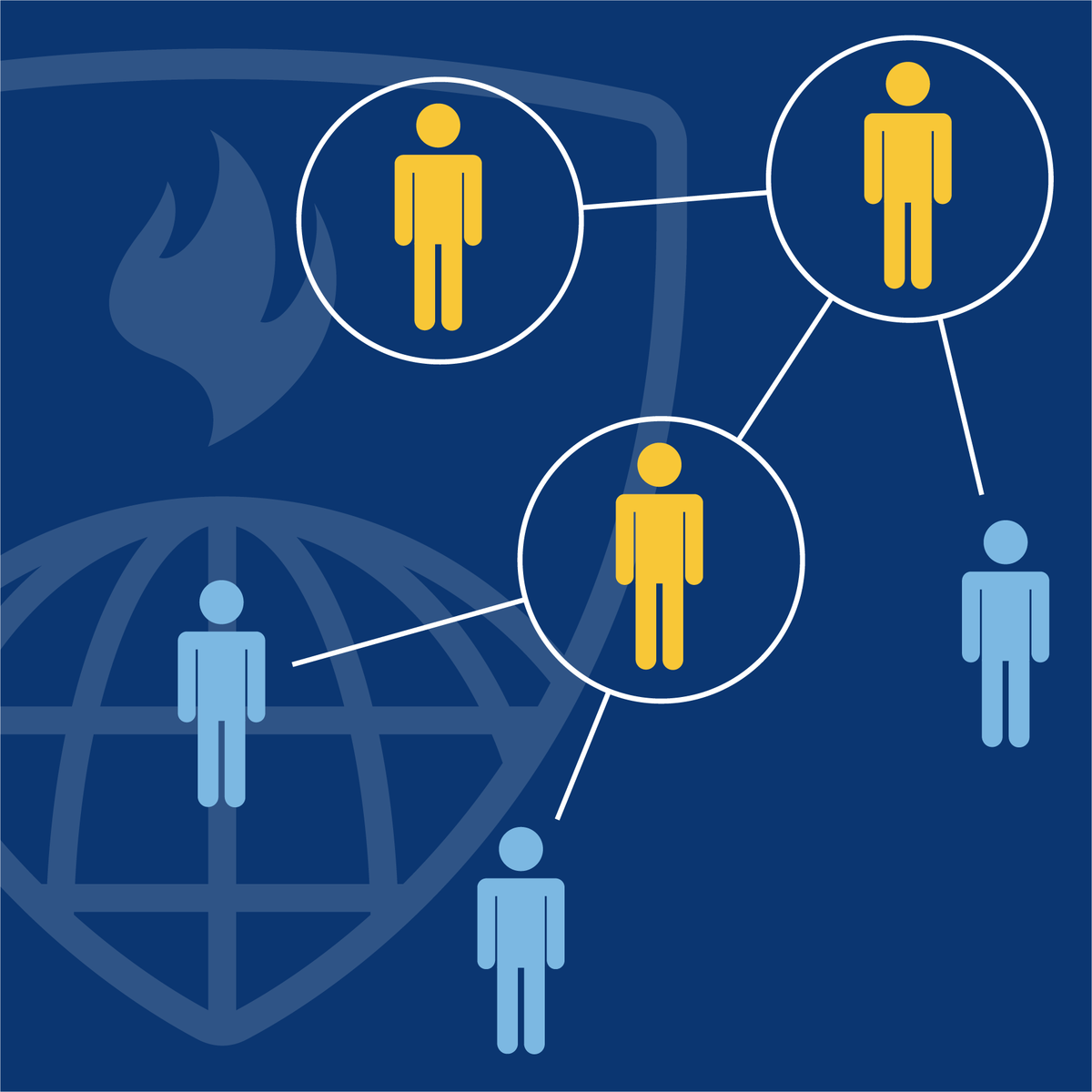Back to Courses









Public Health Courses - Page 17
Showing results 161-170 of 196

An Introduction to the U.S. Food System: Perspectives from Public Health
A food system encompasses the activities, people and resources involved in getting food from field to plate. Along the way, it intersects with aspects of public health, equity and the environment. In this course, we will provide a brief introduction to the U.S. food system and how food production practices and what we choose to eat impacts the world in which we live. We will discuss some key historical and political factors that have helped shape the current food system and consider alternative approaches from farm to fork. The course will be led by a team of faculty and staff from the Johns Hopkins Center for a Livable Future. Guest lecturers will include experts from a variety of disciplines, including public health, policy and agriculture.
COVID-19 Contact Tracing
The COVID-19 crisis has created an unprecedented need for contact tracing across the country, requiring thousands of people to learn key skills quickly. The job qualifications for contact tracing positions differ throughout the country and the world, with some new positions open to individuals with a high school diploma or equivalent.
In this introductory course, students will learn about the science of SARS-CoV-2 , including the infectious period, the clinical presentation of COVID-19, and the evidence for how SARS-CoV-2 is transmitted from person-to-person and why contact tracing can be such an effective public health intervention. Students will learn about how contact tracing is done, including how to build rapport with cases, identify their contacts, and support both cases and their contacts to stop transmission in their communities. The course will also cover several important ethical considerations around contact tracing, isolation, and quarantine. Finally, the course will identify some of the most common barriers to contact tracing efforts -- along with strategies to overcome them.

Global Quality Maternal and Newborn Care
This course is designed for administrators, advocates, policy makers, clinicians, and service users. It will give you the background, recommendations, and tools you need to address issues related to high quality maternal and newborn care in your own setting. In particular, you will learn about the evidence behind implementing the midwifery model of care as a means to advancing the health and wellbeing of mothers and babies globally. The modules in this course are structured around the Quality Maternal and Newborn Care Framework, first published in the landmark 2014 Lancet Series on Midwifery. You will learn from nearly 20 expert contributors as they discuss their research and personal experiences in low, middle, and high resource settings.

Measuring and Modeling Impact in Evaluations
We want to provide you some information about our course “Measuring and Modeling Impact in evaluations”. The purpose of this course is to give you a better understanding of different measures of impact that could be used in the evaluation of a program in the areas of maternal and child health and nutrition. For each of the measures presented, we will discuss current sources of data you might draw on as well as describe the methods that can be used to measure these. When we describe the methods, we also try to identify the strengths and weakness of the methods as well as their suitably for use in an evaluation. The course also discusses how modeling can be used in evaluations as either a replacement for measuring impact or to supplement measured impact. The last two lessons in this course focus on giving you an introduction and training on how the Lives Saved Tool (LiST) works and how to use it. This model can be used to estimate most – if not all – of the impact measures we describe in the course and can be an important part of both planning and estimating impact in an evaluation of a large-scale program. While this course is self-contained, it is also linked to other courses on evaluation. We developed this course for public health program managers and evaluators and assume the students in the course will have a background in public health with a focus on maternal and child health in low- and middle-income countries.
The development of this course was supported by a grant from Government Affairs Canada (GAC) for the Real Accountability, Data Analysis for Results (RADAR) project.
Infectious Disease Transmission Models for Decision-Makers
During the COVID-19 pandemic, both the promise and perils of using infectious disease transmission models to make public health policy decisions became clearer than ever. Optimal use of modeled output requires that public health policy makers be informed consumers of models, that they understand the strengths and limitations of possible approaches, and they know the right questions to ask about the vulnerabilities of the model results.
This course aims to provide anyone who makes decisions about public health policies and programs with a clear understanding of how infectious disease transmission models work, the various types and functions, and how they can be appropriately used to make decisions. There is no requirement that students have any prior background in infectious disease models and the course does not include any equations. Anyone with a basic background in public health and infectious diseases with an interest in learning more about infectious disease models will benefit from this course.
In this course, participants will review the basics of infectious disease transmission models, including comparisons to other types of predictions used in daily life and an overview of the key components of a model and modeling structure. Next, participants will delve into the types of infectious disease models: forecasting, inferential, and theoretical models. Then, participants will learn about assessing whether a model is useful, reasonable and relevant, as well as the vulnerabilities of these models. These concepts will be applied to case studies of the Ebola outbreak in West Africa from 2014-2016 and the COVID-19 pandemic. The course will be rounded out with a review of how models inform policy decisions, including major sources of uncertainty for decision making.
Learners who complete this course will have a broad view of infectious disease transmission models, how to assess the usefulness of a given model, and how these models inform policy decisions.
Who should take this course?
-Public health policy makers
-Anyone interested in learning about how infectious disease transmission models can guide public health policy
The development of this training was funded by the Centers for Disease Control and Prevention’s Center for Forecasting and Outbreak Analytics. We are grateful to Coursera for waiving enrollment fees through 2025.

Strengthening territorial response for better health
This course was developed by the reference network for the European Regional and Local Health Authorities (EUREGHA), Agència de Qualitat i Avaluació Sanitàries de Catalunya (AQuAS), and Mental Health Europe (MHE) as part of the research project 'Pan-European Response to the Impacts of the COVID-19 and future Pandemics and Epidemics' (PERISCOPE, https://www.periscopeproject.eu/). Funded by the European Commission Research Funding programme Horizon 2020 under the Grant Agreement number 101016233, PERISCOPE investigates the broad socio-economic and behavioural impacts of the COVID-19 pandemic, to make Europe more resilient and prepared for future large-scale risks.

Everyday Chinese Medicine 2
This course, Everyday Chinese Medicine II offered by the Chinese University of Hong Kong, aims to show to the public, as well as the healthcare professionals about the basic principles of Chinese medicine. Our primary goal is to empower healthcare choices by promoting awareness and practical application on Chinese medicine diagnostic and therapeutic approaches, and to facilitate interprofessional education between Chinese and conventional clinicians.
Learners will develop skills in applying theories of Chinese medicine for understanding health and illnesses. We will discuss the treatment principles of Chinese Medicine and the corresponding herbs for application. This will then be followed by the application of diets and exercise. Finally, we would expand the horizons of how integrative medicine are practiced in Chinese populations such as China, Taiwan and Hong Kong for specific diseases. This showcases how different disciplines joints-hands to fulfill the unmet needs from the public. The perspective of research, education and medical coverage will be explored.

Study Designs in Epidemiology
Choosing an appropriate study design is a critical decision that can largely determine whether your study will successfully answer your research question. A quick look at the contents page of a biomedical journal or even at the health news section of a news website is enough to tell you that there are many different ways to conduct epidemiological research.
In this course, you will learn about the main epidemiological study designs, including cross-sectional and ecological studies, case-control and cohort studies, as well as the more complex nested case-control and case-cohort designs. The final module is dedicated to randomised controlled trials, which is often considered the optimal study design, especially in clinical research. You will also develop the skills to identify strengths and limitations of the various study designs. By the end of this course, you will be able to choose the most suitable study design considering the research question, the available time, and resources.
Point of Care Testing for Sexually Transmitted Infections
What are sexually transmitted infections (STIs), and why do we care? What is point of care testing (POCT)? What do clinicians and patients want and need from the POCT for STIs?
Point of care testing, or medical diagnostic testing done at the time of patient care, is an important tool for the treatment of sexually transmitted infections. This course looks at point of care testing for sexually transmitted infections from the perspective of the clinician, the patient, and the regulatory environment.
Learners will hear from experts about the basics of sexually transmitted infections, the methods of diagnosis, and then dive more deeply into the why and how of point of care testing.
Note: This course discusses the specifics of sexually transmitted infections in detail, including photos of genitalia exhibiting symptoms of these infections.

Reducing Gun Violence in America: Evidence for Change
Reducing Gun Violence in America: Evidence for Change is designed to provide learners with the best available science and insights from top scholars across the country as well as the skills to understand which interventions are the most effective to offer a path forward for reducing gun violence in our homes, schools, and communities.
Through this course, you will learn how to:
1. Appreciate the scope of gun violence and the importance of considering the issue across a variety of contexts.
2. Describe the role of law and policy in addressing gun violence at the federal, state, and local levels.
3. Compare the effectiveness of gun violence policies and highlight the importance of changing the way we talk about gun
violence.
4. Describe state standards for civilian gun carrying and use and how those standards affect crime and violence.
5. Describe how firearm design is regulated, the effective and just enforcement of firearm laws, and strategies for reducing
police-involved shootings.
6. Identify and explain evidence-based programs to reduce gun violence and understand public opinion on gun policy.
As a student of this course, it’s important to recognize that you are part of an international learning community. We understand that gun violence can be a difficult issue to discuss and we all have our own set of opinions and beliefs. However, we ask you to please remember that gun violence is something that affects every person differently. It’s important to understand that this course is intended to generate productive and meaningful conversation.
We ask students of this course to abide by the rules outlined and expected of you by Coursera’s Code of Conduct Policy. Please help us promote a healthy, productive, and sustainable learning environment for all and practice the following principles:
Be polite.
Treat your fellow learners with respect.
Insulting, condescending, or abusive words will not be tolerated.
Do not harass other learners.
Polite debate is welcome as long as you are discussing the ideas or the evidence, not attacking the person.
Be sensitive.
Remember that Coursera is a global forum with learners from many different cultures and backgrounds.
Be kind, thoughtful, and open-minded when discussing race, religion, gender, sexual orientation, or controversial topics
since others likely have differing perspectives.
Post appropriate content.
Content that violates the Honor Code or Terms of Service is not permitted.
You may not post inappropriate (e.g., pornographic or obscene) content.
Do not post copyrighted content.
Do not advertise or promote outside products or organizations.
Do not spam the forums with repetitive content.
Please note that violations of Coursera’s Code of Conduct, Honor Code, or Terms of service are not permitted and may result in:
Deletion of posted content.
Removal from the course.
Losing access to the Coursera site.
*It is important to also note that certain policies and laws mentioned in this course are likely to change and develop over time. As a result, we understand that course content may need to be updated to reflect such changes. While we will strive to do this as quickly as possible, we appreciate your patience. All information included in the course is reported accurately at the time of recording and we intend to update lectures as soon as possible and to the best of our ability.
The development of this course was made possible through generous financial support provided by the David and Lucile Packard Foundation, an organization committed to improving the lives of children, enabling the creative pursuit of science, advancing reproductive health, and conserving and restoring the earth’s natural systems.
Popular Internships and Jobs by Categories
Find Jobs & Internships
Browse
© 2024 BoostGrad | All rights reserved